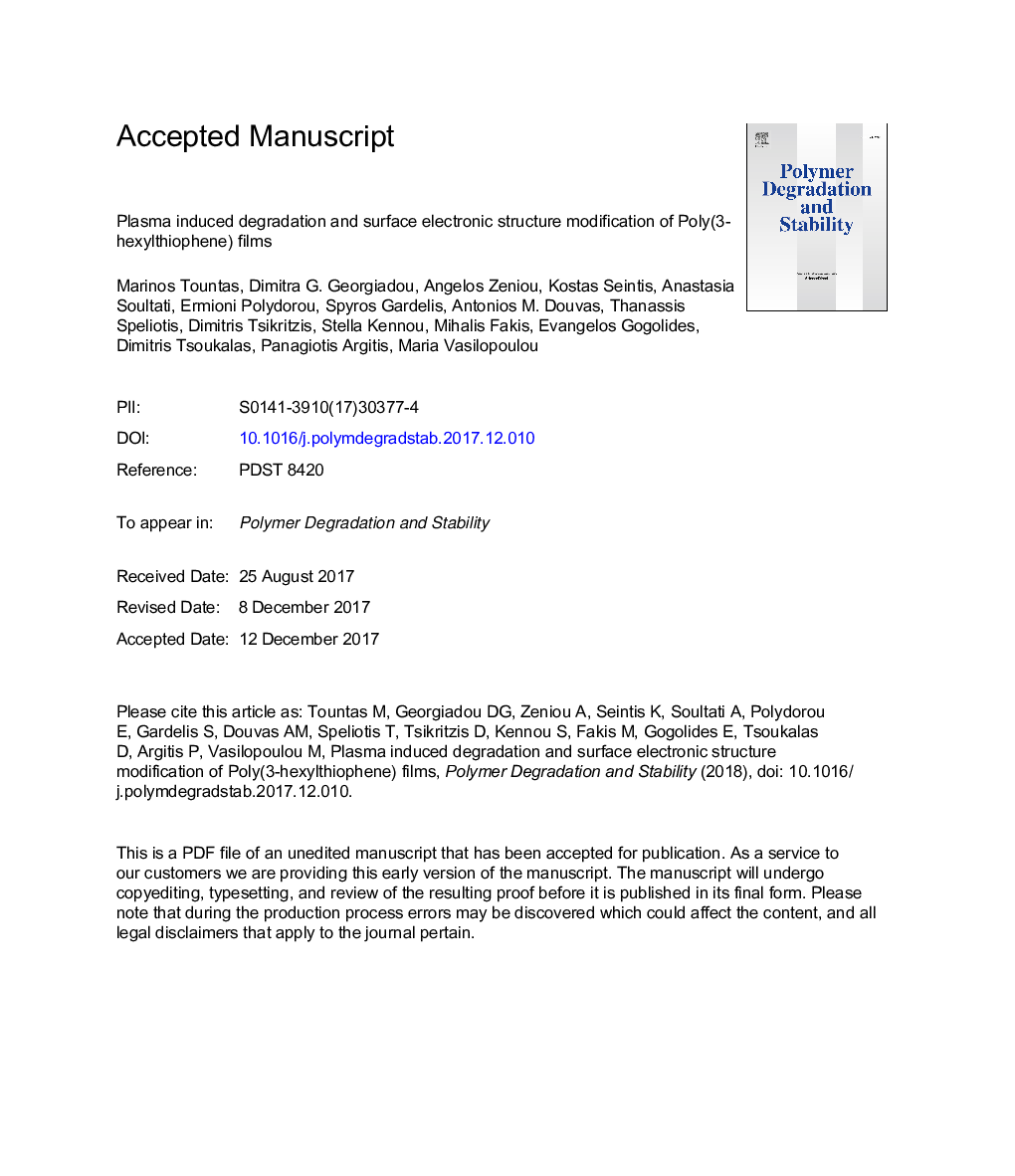| Article ID | Journal | Published Year | Pages | File Type |
|---|---|---|---|---|
| 7824147 | Polymer Degradation and Stability | 2018 | 32 Pages |
Abstract
Plasma treatment is an environmentally friendly solution for modifying or nanostructuring the surface of several materials including photoactive polymers. The detailed characterization of the effect of plasma treatment on chemical and optoelectronic properties of photoactive polymers is, therefore, of specific interest. Herein, the effect of the exposure of poly(3-hexylthiophene) (P3HT) thin films to plasma created in three different gases (oxygen, argon and hydrogen) was studied. A range of spectroscopic techniques, such as x-ray (XPS) and ultraviolet (UPS) photoelectron spectroscopy in conjunction with UV-vis absorption, Fourier transform infrared (FTIR) and photoluminescence (PL) spectroscopies, are employed to quantify the extent of chemical modification occurring in each particular case. It is shown that oxygen plasma treatment leads to the disruption of the Ï-conjugation via the direct oxidation of the sulfur atom of the thiophene ring while the aliphatic side chain remains nearly unaffected. An oxidation mechanism is proposed according to which the sulfur atom of the thiophene ring is oxidized into sulfoxides and sulfones, which subsequently degraded into sulfonates or sulfonic acids in a relatively small degree. For argon and hydrogen plasma treatments some oxidation products are detected only at the polymer surface. In all cases the polymer surface Fermi level is shifted closer to the highest occupied molecular orbital (HOMO) energy after plasma treatment indicating p-type doping arising from surface oxidation.
Related Topics
Physical Sciences and Engineering
Chemistry
Organic Chemistry
Authors
Marinos Tountas, Dimitra G. Georgiadou, Angelos Zeniou, Kostas Seintis, Anastasia Soultati, Ermioni Polydorou, Spyros Gardelis, Antonios M. Douvas, Thanassis Speliotis, Dimitris Tsikritzis, Stella Kennou, Mihalis Fakis, Evangelos Gogolides,
